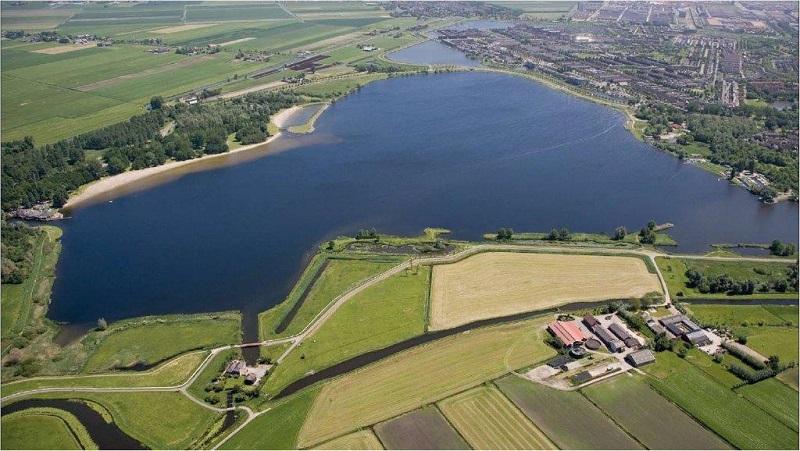Blue-green algae
Blue-green algae are not algae but bacteria. Most species are blue-green in colour. Nuisance caused by blue-green algae usually occurs in warm weather in nutrient-rich water. Blue-green algae grow optimally at a temperature between 20 and 30 ºC.
Blue-green algae are mainly found in fresh stagnant water such as ponds, but also in swimming pools. They float on the water surface and form a layer that looks like oil. When the layer becomes thicker and the algae have less space, they die. This creates a greenish, smelly slurry. The green slurry reduces the amount of light in the water. Due to the decomposition and lack of light, less oxygen enters the water and fish and other aquatic animals can also die.
Blue-green algae produce toxic substances. These are harmful to humans and animals. Common complaints are skin rash, headache, fever and stomach/intestinal problems. Small children can suffer from it sooner because they regularly swallow some water while swimming.
Water quality control
The official swimming season for natural water runs from 1st of May to 1st of October. During this period, the water quality is checked of the designated swimming locations in South Holland, including the Zoetermeerse Plas ( Noord Aa ). Here samples are taken at 3 locations: at the swimming beach, the play pond and the nudist beach. The inspection is carried out by the Hoogheemraadschap van Rijnland on behalf of the Province. The water is mainly examined for pathogenic bacteria and the presence of blue-green algae or other toxic algae.
Long-term solutions
Blue-green algae is a current problem in the Zoetermeerse Plas. Various experiments have been tried to get rid of the blue-green algae. The project 'Ons Blauwe Goud' is currently running. You can read more about this at www.rijnland.net | Ons Blauwe Goud This project aims to ensure that no blue-green algae develop in the Zoetermeerse Plas.

